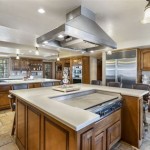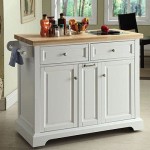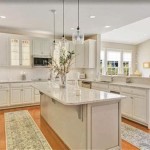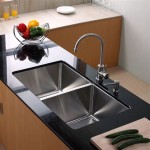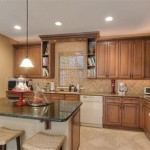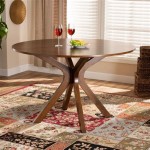What Is The Best Paint To Use For Kitchen Cabinets?
Selecting the appropriate paint for kitchen cabinets is a critical decision that significantly impacts the longevity and aesthetic appeal of a kitchen space. The ideal paint must withstand the rigors of daily use, including exposure to moisture, grease, and frequent cleaning. This article provides a comprehensive overview of various paint options available for kitchen cabinets, considering their characteristics, advantages, and disadvantages, empowering readers to make informed decisions tailored to their specific needs and preferences.
The kitchen environment presents unique challenges that necessitate a specialized approach to paint selection. Unlike walls or furniture in other rooms, kitchen cabinets endure increased humidity levels from cooking and dishwashing, along with potential splashes and spills from food preparation. The surfaces are also subject to frequent cleaning with various cleaning agents, some of which can be abrasive or chemically reactive. Therefore, choosing a paint that offers exceptional durability, moisture resistance, and ease of cleaning is paramount.
Several factors influence the selection of the best paint for kitchen cabinets. These include the type of material the cabinets are constructed from – wood, laminate, or metal – as well as the desired finish – matte, satin, semi-gloss, or high-gloss. Budget constraints and personal aesthetic preferences also play a role in the decision-making process. A thorough understanding of these factors will facilitate a judicious selection that balances performance and visual appeal.
Understanding the Different Types of Paint
Several paint types are commonly used for kitchen cabinets, each possessing distinct properties that make them suitable for different applications. Understanding these properties is crucial for selecting the optimal paint for a specific project. The most prevalent options include alkyd, latex, acrylic, and specialized cabinet paints.
Alkyd Paint: Alkyd, also known as oil-based paint, has been a long-standing choice for cabinet painting due to its exceptional durability and leveling capabilities. Alkyd paints create a hard, smooth finish that is resistant to scratches and chips. They also offer excellent adhesion, making them suitable for surfaces that have been previously painted. However, alkyd paints have a higher VOC (volatile organic compound) content compared to latex paints, leading to stronger odors and longer drying times. Cleanup requires the use of mineral spirits or paint thinner, which can be inconvenient. Furthermore, alkyd paints tend to yellow over time, particularly in areas exposed to limited sunlight.
Latex Paint: Latex paint is a water-based option that offers several advantages over alkyd paint. It has a lower VOC content, resulting in reduced odor and easier cleanup with soap and water. Latex paint dries relatively quickly and is more flexible than alkyd paint, making it less prone to cracking or peeling. Modern latex paints have improved significantly in terms of durability and adhesion, but they may still require a primer, especially on glossy or non-porous surfaces. While generally less durable than alkyd paints, high-quality acrylic latex paints offer excellent performance for kitchen cabinets.
Acrylic Paint: Acrylic paints are known for their superior adhesion, flexibility, and resistance to cracking and peeling. They also offer excellent color retention and are less prone to fading than other types of paint. Acrylic paints are water-based, making them easy to clean up and low in VOCs. They are a versatile option for kitchen cabinets, providing a durable and attractive finish. However, acrylic paints can be more expensive than standard latex paints.
Specialized Cabinet Paints: Several paint manufacturers offer specialized cabinet paints designed specifically for use on kitchen cabinets. These paints often incorporate a blend of acrylic and alkyd resins to provide the benefits of both types of paint. They typically offer enhanced durability, adhesion, and leveling properties, resulting in a professional-looking finish. Specialized cabinet paints may come in various sheens, including matte, satin, semi-gloss, and high-gloss, allowing for customization of the cabinet's appearance. While often more expensive than general-purpose paints, specialized cabinet paints can offer superior performance and longevity for kitchen cabinets.
Factors Influencing Paint Selection
The selection of the optimal paint for kitchen cabinets is influenced by a multitude of factors beyond the basic paint type. These factors include the cabinet material, the desired finish, the preparation requirements, and the long-term maintenance considerations.
Cabinet Material: The type of material the cabinets are made from significantly impacts the choice of paint. Wood cabinets, whether solid wood or wood veneer, are generally compatible with most paint types, but require proper priming to ensure adhesion and prevent tannin bleed-through. Laminate cabinets, which have a smooth, non-porous surface, require a specialized bonding primer to ensure the paint adheres properly. Metal cabinets require a rust-inhibiting primer to prevent corrosion and promote paint adhesion. Understanding the unique characteristics of the cabinet material is critical for selecting the appropriate paint and primer combination.
Desired Finish: The desired finish, or sheen, of the paint affects both the appearance and the durability of the cabinets. Matte finishes have a low sheen and offer a soft, velvety look. They are good at hiding imperfections but are more difficult to clean. Satin finishes have a slightly higher sheen than matte finishes and are easier to clean. Semi-gloss finishes offer a balance between durability and ease of cleaning, making them a popular choice for kitchen cabinets. High-gloss finishes are the most durable and easiest to clean, but they also highlight imperfections in the surface. The choice of finish depends on personal preference and the desired level of durability and maintenance.
Preparation Requirements: Proper preparation is essential for achieving a successful paint job on kitchen cabinets. This includes cleaning the cabinets thoroughly to remove grease, dirt, and grime. Sanding the cabinets to create a smooth, even surface and to improve paint adhesion. Applying a primer to seal the surface and provide a uniform base for the paint. The amount of preparation required depends on the type of paint being used and the condition of the cabinets. Some paints, such as self-priming paints, may require less preparation, while others may require multiple coats of primer.
Long-Term Maintenance: The long-term maintenance requirements of the painted cabinets should also be considered when selecting a paint. Paints that are durable and easy to clean will require less maintenance over time. Paints that are prone to chipping, peeling, or fading will require more frequent touch-ups and repairs. Selecting a paint that is specifically designed for kitchen cabinets can help to minimize maintenance requirements and extend the lifespan of the paint job.
Application Techniques and Tools
The application technique and the tools used to paint kitchen cabinets significantly influence the final outcome. Proper techniques and tools can result in a smooth, even finish that enhances the beauty and durability of the cabinets.
Spraying vs. Brushing/Rolling: Paint can be applied to kitchen cabinets using either a sprayer or a brush and roller. Spraying typically results in a smoother, more professional-looking finish, especially when using alkyd or specialized cabinet paints. However, spraying requires more skill and equipment, including a paint sprayer, a well-ventilated workspace, and appropriate safety gear. Brushing and rolling are more accessible for DIY projects but require careful technique to avoid brushstrokes or roller marks. Using high-quality brushes and rollers designed for smooth surfaces can help to minimize these imperfections.
Proper Surface Preparation: Regardless of the application method, proper surface preparation is critical for achieving a successful paint job. This includes cleaning, sanding, and priming the cabinets thoroughly. Cleaning removes grease, dirt, and grime that can interfere with paint adhesion. Sanding creates a smooth, even surface and improves paint adhesion. Priming seals the surface and provides a uniform base for the paint. Skipping any of these steps can compromise the quality and durability of the paint job.
Application Techniques: When brushing or rolling, apply thin, even coats of paint, overlapping each stroke slightly to avoid gaps. Avoid applying too much pressure, which can cause brushstrokes or roller marks. Allow each coat of paint to dry completely before applying the next coat. When spraying, maintain a consistent distance and speed to avoid runs or drips. Overlap each pass slightly to ensure complete coverage. Multiple thin coats are generally better than one thick coat, as they are less prone to runs, drips, and cracking.
Tools and Equipment: Using high-quality tools and equipment can make the painting process easier and more efficient. Invest in good-quality brushes, rollers, and paint sprayers. Use painter's tape to protect adjacent surfaces and create clean lines. Use drop cloths to protect floors and furniture from paint splatters. Wear appropriate safety gear, including gloves, eye protection, and a respirator, especially when spraying paint. Proper tools and equipment can help to ensure a professional-looking finish.
In summary, selecting the best paint for kitchen cabinets is a multifaceted process that requires careful consideration of various factors, including the type of paint, the cabinet material, the desired finish, and the application techniques. By understanding these factors and following best practices for preparation and application, individuals can achieve beautiful and durable results that enhance the value and aesthetics of their kitchen space.

Best Paint Color For Kitchen Cabinets

Best Paint For Kitchen Cabinets Solved Bob Vila

How To Paint Kitchen Cabinets In 7 Simple Steps

7 Mistakes To Avoid When Painting Kitchen Cabinets Aj Cochrane

How To Paint Kitchen Cabinets Best Color Ideas Cost

Best Paint For Kitchen Cabinets 24 Brands Blind Tested 2024

What Is The Best Paint For Kitchen Cabinets Heritage Custom Painting

What Kind Of Paint To Use On Cabinets

What Is The Best Paint To Use On Kitchen Cabinets

Cabinet Refacing Vs Painting Which Is Right For You

